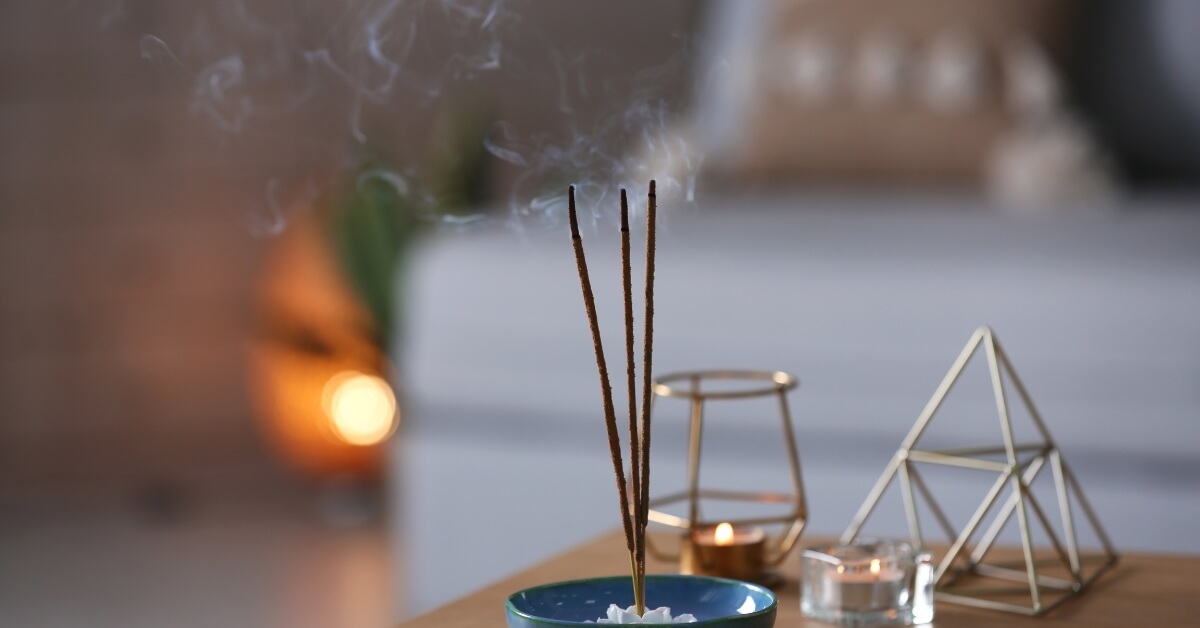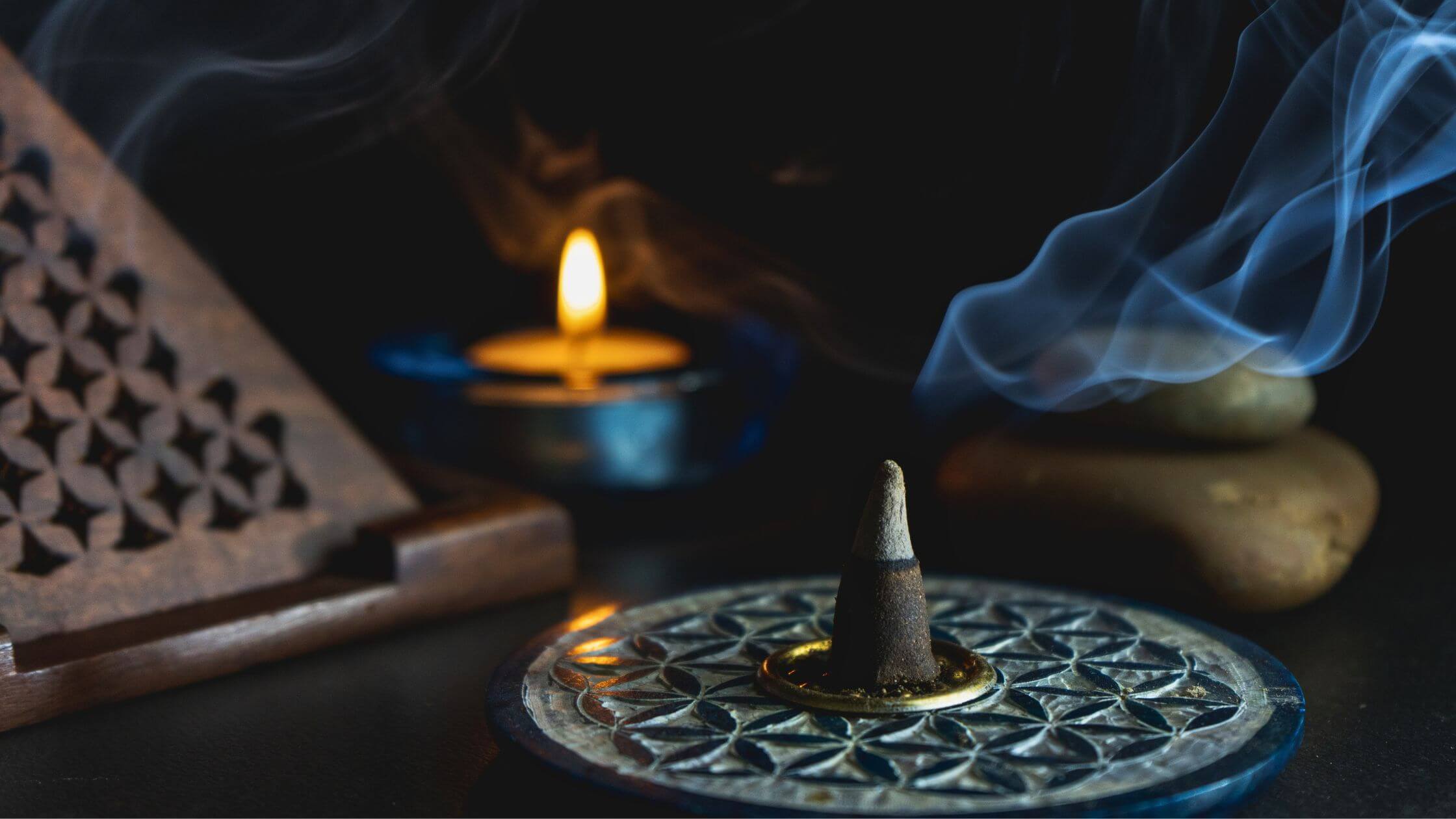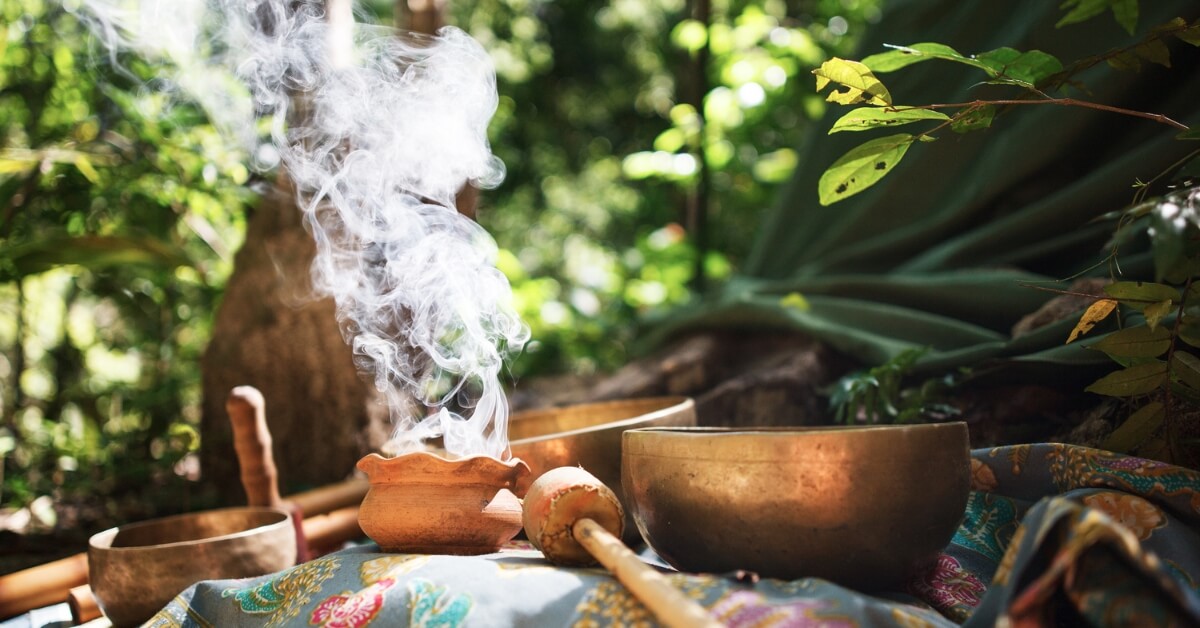Introduction:
In a world suffused with scents—bold and subtle, fleeting and enduring—one aroma stands regal, radiating a timeless charm that has captivated human senses for millennia: Sandalwood. Its scent is a harmonious blend of rich, woody base notes, subtly intertwined with a creamy sweetness—a scent that once experienced, is never forgotten.
Sandalwood, derived from the heartwood of trees in the genus Santalum, has been a revered element in rituals and lifestyles, from the sacred temples of the East to the elite perfumeries of the West. Across continents and cultures, its presence is felt as a grounding force that brings a sense of tranquility, purity, and depth.
But what is it about Sandalwood that has earned it the moniker of the ‘King of Aromatics’? Is it merely the enchanting fragrance that lingers long after the source is gone? Or does its majesty lie deeper, within a myriad of qualities that are as rich and complex as its scent?
In this exploration, we will journey into the heart of this aromatic sovereign, unveiling the seven irresistible qualities that have solidified its place as a true king among fragrances.
Prepare to be enchanted.
1. Timeless Fragrance
Unique Aroma of Sandalwood:
Describing Sandalwood’s aroma can often feel like narrating a poetic symphony. At its core, Sandalwood carries a profound earthiness—a scent that feels like an embrace from Mother Nature herself. This woody embrace is beautifully intertwined with a rich milky texture, a quality unparalleled in the world of fragrances. While other woods like cedar evoke a sense of sharp rusticity and pine brings forth a cool forest breeze, Sandalwood is warmer, more intimate. Its scent speaks of ancient trees, of quiet moonlit nights in dense forests, and the silent whispers of sages from bygone eras.
Historical Allure:
Sandalwood’s fragrance is not a fleeting trend; it’s a testament to its undying allure. Ancient civilizations, be it the Mesopotamians, Egyptians, or Indus Valley inhabitants, have all extolled the virtues of this sacred wood. Scripts etched in old palm leaves or on temple walls often speak of grand processions where this incense wafted in the air, creating an ambiance of reverence and serenity. When explorers traveled along the Silk Road, they carried tales of distant lands, but the scent of Sandalwood was a recurring narrative—a common thread that connected civilizations.
Its significance in perfumery is profound. Sandalwood serves as a base note in countless perfumes, providing longevity and a smooth depth. Its versatility is unmatched, blending seamlessly with floral, fruity, or spicy notes, creating aromatic masterpieces that are cherished across generations.
The Distinction between Genuine Sandalwood and Imitations:
The world of fragrances, like any other, has seen its share of counterfeits. The growing demand for Sandalwood over the centuries, paired with its limited availability, has given rise to numerous imitations. Synthetic variations, while cheaper, lack the soul and depth of genuine Sandalwood. There’s a hollowness to them—a superficiality that discerning noses can identify. But why settle for a mere echo when the symphony of authenticity awaits? By opting for genuine products, one not only experiences the true depth of its aroma but also connects with an ancient lineage of spiritual and aromatic tradition.
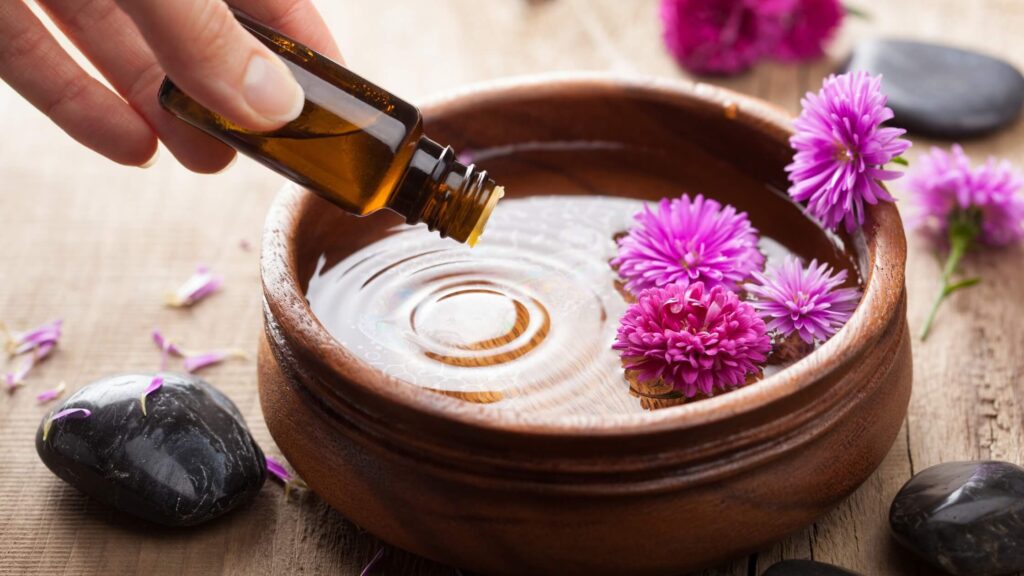

Pure Sandalwood Essential Oil
2. Spiritual Elevation
Sandalwood in Religious Rituals:
The tapestry of human spirituality is richly interwoven with the scent of Sandalwood. This aromatic heartwood has graced temples, mosques, churches, and monasteries across continents. In Hinduism, its paste is reverently applied to the foreheads of devotees and deities, signifying a divine connection. In Buddhism, its calming scent is a medium to deeper meditation, aiding monks in their introspective journeys. The Islamic world, too, cherishes Sandalwood as a preferred scent during important ceremonies. This universal appeal underscores its unparalleled role in bridging diverse religious beliefs under one fragrant canopy.
Meditation and the Mind:
Meditation, the art of grounding oneself, is an endeavor to find an inner sanctuary of peace and clarity. With its deep, resonant aroma, acts as an anchor for the wandering mind. Its scent is not just a fragrance but a lullaby to the soul, coaxing it into a state of deep tranquility. Those who’ve meditated with this incense often describe their experiences as being “rooted” or “centered.” In a world brimming with chaos it offers a fragrant reprieve, a momentary escape into realms of inner serenity.
Centering the Chaotic Mind:
The modern world is an orchestra of stimuli. Amid this relentless cacophony, finding one’s center can often feel like a daunting task. Enter Sandalwood. Its scent, reminiscent of ancient forests and wise old trees, has a grounding effect. In aromatherapy, its essential oil is often chosen for individuals grappling with anxiety, restlessness, or insomnia. A few drops in a diffuser, and the room transforms, becoming a haven of calm. The sheer magic of Sandalwood essential oil lies in its capacity to draw one back to their essence, to the core of their being.
3. Therapeutic Marvel
Aromatherapy’s Crown Jewel:
Sandalwood isn’t just a treat for the olfactory senses; it’s a therapeutic heavyweight in the realm of aromatherapy. Known for its calming, harmonizing properties, the essential oil derived is a coveted elixir for many practitioners. When diffused, its profound scent permeates the environment, creating a sanctuary of relaxation. It’s a preferred choice for those looking to alleviate stress, anxiety, and mental turbulence. Furthermore, the deep, grounding scent acts as an emotional balancer, assisting in healing emotional wounds, fostering openness, and reviving the spirit.
Medicinal Properties and Healing Capabilities:
Beyond its aromatic allure, Sandalwood possesses a treasure trove of medicinal virtues. For centuries, traditional medicine systems like Ayurveda have held it in high regard for its antiseptic, anti-inflammatory, and antipyretic properties. When applied topically as a paste, it’s known to soothe skin irritations, reduce acne, and offer relief from sunburns. The oil, when mixed with other carrier oils, has been used as an antispasmodic agent, relieving muscle spasms and cramps. Its cooling nature is said to bring down fevers by inducing minor perspiration and cooling the body. Furthermore, studies have indicated potential anti-carcinogenic properties, making it a subject of interest in modern medicine.
Ingesting Sandalwood or its oil without proper guidance is not advised, and it’s crucial to consult with healthcare professionals before using it for therapeutic purposes.
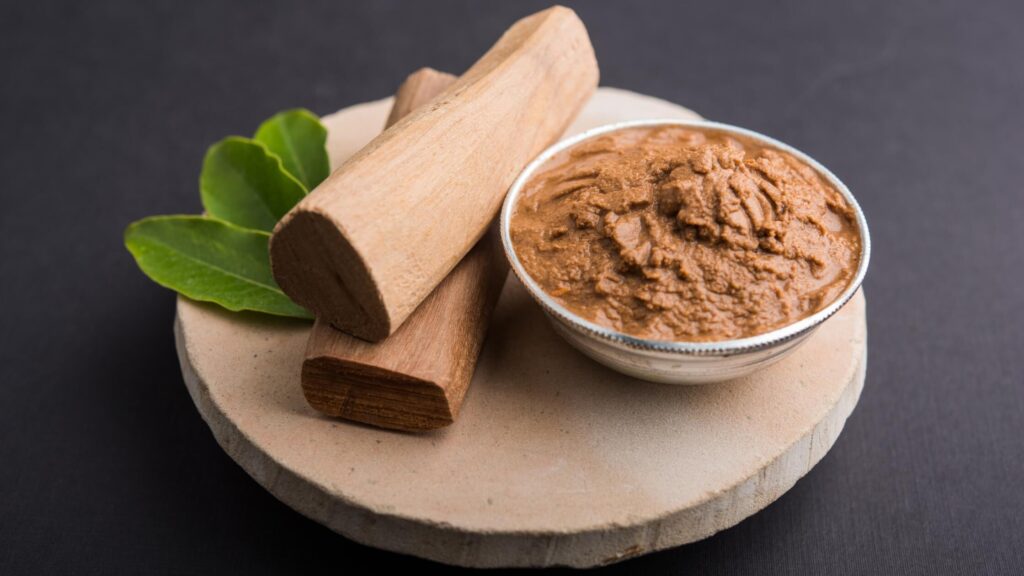

Sandalwood Paste
4. Skin-Care Elixir:
From Ancient Regimes to Modern Rituals:
A whisper through the annals of time reveals Sandalwood’s esteemed status in skincare. Since ancient times, civilizations across Asia revered this wood not just for its mesmerizing fragrance but for its remarkable skincare benefits. From queens and kings indulging in Sandalwood-infused baths to the common folks applying it as a protective paste, its applications were vast.
Ancient Ayurvedic scriptures detailed recipes where it was combined with other herbs to form potent concoctions addressing various skin issues. In traditional Chinese medicine, it was recognized for its cooling nature, often used to balance the heat and calm skin inflammations.
Fast forward to today, and Sandalwood’s legacy in skincare continues unabated. Modern cosmetic brands, in their quest for natural and effective ingredients, have embraced it wholeheartedly.
Sandalwood’s Panacea for Diverse Skin Types:
Every skin type has its unique needs, and Sandalwood, with its multifaceted benefits, addresses them with aplomb. Its gentle, non-reactive nature makes it suitable for sensitive skin, providing a calming effect without causing irritation. For those battling acne, its antimicrobial properties emerge as a savior. It not only deters acne-causing bacteria but also soothes the inflamed skin.
For mature skin showing signs of aging, it offers hydration and helps in the regeneration of skin cells, reducing fine lines and adding a youthful glow. Its emollient properties ensure that dry skin is sufficiently moisturized, reducing flakiness and making the skin soft and supple.
But the true beauty of Sandalwood lies in its adaptability. It seamlessly integrates with other skincare ingredients, amplifying their benefits.
5. Symbol of Luxury and Opulence:
Regal Representations in Perfumery:
Few fragrances have captivated the olfactory senses of humankind like Sandalwood. In the intricate dance of scents that make up the world of perfumery, this wood has played a leading role, and for a good reason. Its deep, woody undertones, combined with a hint of sweet creaminess, offer an unparalleled richness that has been sought after by master perfumers for centuries.
This majestic aromatic has graced the base notes of countless iconic perfumes, providing a long-lasting sillage that lingers, much like the memory of a timeless romance. Its versatility shines through as it not only stands out when spotlighted but also seamlessly amplifies other notes, weaving a harmonious symphony of scents. It’s no wonder then that it often finds its way into high-end fragrances, its inclusion often being a sign of a perfume’s premium nature. The allure is undeniable; a dab of Sandalwood-infused perfume, and one is immediately enveloped in a scent that exudes sophistication and luxury.
Not just limited to personal fragrances, its luxurious aroma extends to spaces we inhabit. Incenses like the sandalwood incense cone from Mysore infuse homes and sacred spaces with a scent that’s both grounding and uplifting, a testament to its regal charm in perfumery.
A Status Symbol Across Cultures:
Sandalwood’s journey as an emblem of luxury and opulence can be traced back to ancient civilizations. It was not just a tree; it was a testament to affluence. In ancient India, owning Sandal trees was a privilege reserved for royalty. These trees, with their fragrant heartwood, were often gifted by kings to honor distinguished guests or to forge alliances. Its value was not lost on traders either; it often found its way into the treacherous silk route, where it was traded like gold.
In ceremonies, both sacred and regal, Sandal played a pivotal role. It adorned palaces in the form of intricate carvings and burned in sacred rituals, its fragrant smoke believed to connect the mortal realm with the divine.
Fast forward to today, and its association with luxury remains unwavering. Be it in the form of premium essential oils or as an integral part of high-end skincare and wellness products, its presence signifies a touch of class, a nod to a heritage that has celebrated Sandalwood for its unmatched grandeur.
6. Ecological Significance:
Sandalwood in Forest Ecosystems:
From the sultry fragrance that fills the air to the earthy terrain it thrives upon, Sandalwood has a unique role in forest ecosystems. These revered trees, often seen as jewels of the forest, significantly contribute to our planet’s health.
Firstly, Santalum trees are integral components of the carbon cycle. By absorbing carbon dioxide during photosynthesis and releasing life-giving oxygen, they play a pivotal role in regulating air quality. Their presence helps counterbalance the increasing carbon levels, attributed to various human activities, offering a respite to our atmosphere.
Moreover, these trees positively impact soil health. Their intricate root systems help prevent soil erosion, ensuring that the fertile top layer, crucial for various flora, remains intact. These roots also engage in a unique symbiotic relationship with specific fungi, resulting in a mutual exchange of nutrients that enriches the soil further.
Additionally, Sandalwood forests are a haven for biodiversity. These serene groves provide shelter and sustenance to myriad creatures – from birds that serenade the dawn to insects that play their part in the larger ecological web. The dense canopy and underbrush, intertwined with its sweet scent creates a thriving environment for various species, preserving the intricate balance of our ecosystem.
The Imperative of Sustainable Sourcing:
However, the increasing global demand for this wood, owing to its multifaceted uses, has cast a shadow on its ecological significance. Over-exploitation, driven by high market prices, has led to rampant and often illegal logging. Such activities not only deplete the population but also disrupt the delicate forest ecosystems dependent on these trees.
It’s not just about the trees themselves; it’s about preserving the environment they nurture. That’s where sustainable sourcing becomes not just a choice but a dire necessity. Sustainable sourcing ensures that it is harvested without endangering ecosystems or causing irreparable deforestation. It’s about respecting the sanctity of nature while addressing human needs.
Brands, artisans, and producers have a moral and environmental responsibility to adhere to ethical practices. And as consumers, we wield the power of choice. By supporting brands that prioritize sustainable practices, such as Maison Etherique, we play our part in safeguarding these aromatic forests for future generations.
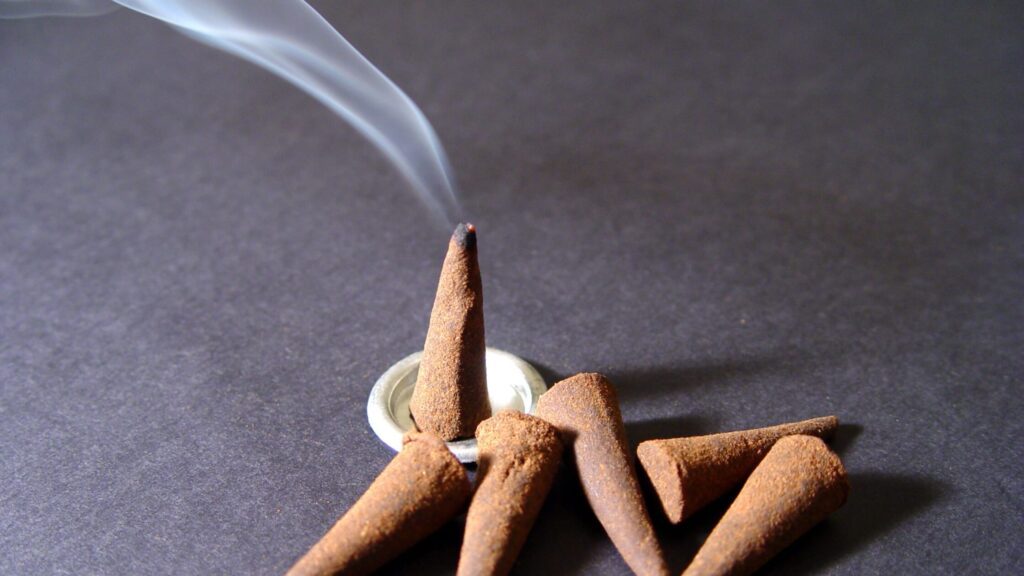

Sandalwood Dhoop Incense Cone
7. Mysore: The Sandalwood Capital
Significance of Mysore in the Industry:
Mysore, a historic city in the southern part of India, holds an unparalleled position in the world of Sandalwood. Often referred to as the ‘Sandalwood City’, Mysore has been at the epicenter of the Sandalwood trade for centuries.
Its deep-rooted connection with this special tree traces back to the days of royalty, where the grand palaces were scented with the divine fragrance of this precious wood. Artisans with skills passed down through generations, crafted intricate sculptures, furniture, and other treasures that were sought after by kings and nobles.
Even today, Mysore remains a beacon for Sandalwood aficionados worldwide. The city is not only a significant producer but also a central trading hub for such products. The dedication and craftsmanship of Mysore’s artisans have propelled the city into the global limelight, making its name synonymous with high-quality Sandalwood.
One can’t talk about Mysore without mentioning the unique products derived from its Sandal trees. For instance, sandal incense from Mysore carries a distinctive aroma, a testament to the rich heritage and authentic practices of the region.
Unique Characteristics of Mysore Sandalwood:
When you think of Sandalwood, a fragrant, soft, and creamy note might come to mind. However, not all Sandalwood is created equal. Mysore Sandal is the gold standard, distinguished by its intensely rich, warm, and milky aroma.
It’s not just the scent that sets it apart. The texture and color of Mysore Sandalwood are unique. With a fine-grained structure and a golden hue, it’s visibly different from other variants. Its oil is thick and lustrous, known for its longer-lasting scent and superior therapeutic properties.
Traditional methods of extraction and processing, often safeguarded as family secrets, contribute to the unmatched quality of Mysore Sandal. These time-tested techniques ensure that the wood retains its natural essence, lending a pure and authentic fragrance to the products.
Sandalwood’s Unparalleled Stature:
From ancient temples to modern-day spas, from the heart of dense forests to the shelves of luxury boutiques, it has journeyed through time and space, retaining its status as a prized aromatic gem. As we’ve journeyed through the captivating world of this special wood in this article, one truth resonates deeply: its allure is timeless. It isn’t merely an aromatic wood or oil; it’s a bridge between the earthly and the ethereal, the mundane and the sacred.
Its fragrance carries tales of sages meditating deep in forests, of royals adorning their palaces with Sandalwood artifacts, and of healers using its therapeutic properties to soothe ailments. Its multifaceted role in spirituality, healthcare, luxury, and even ecology underlines its unparalleled stature in the world of aromatics.
